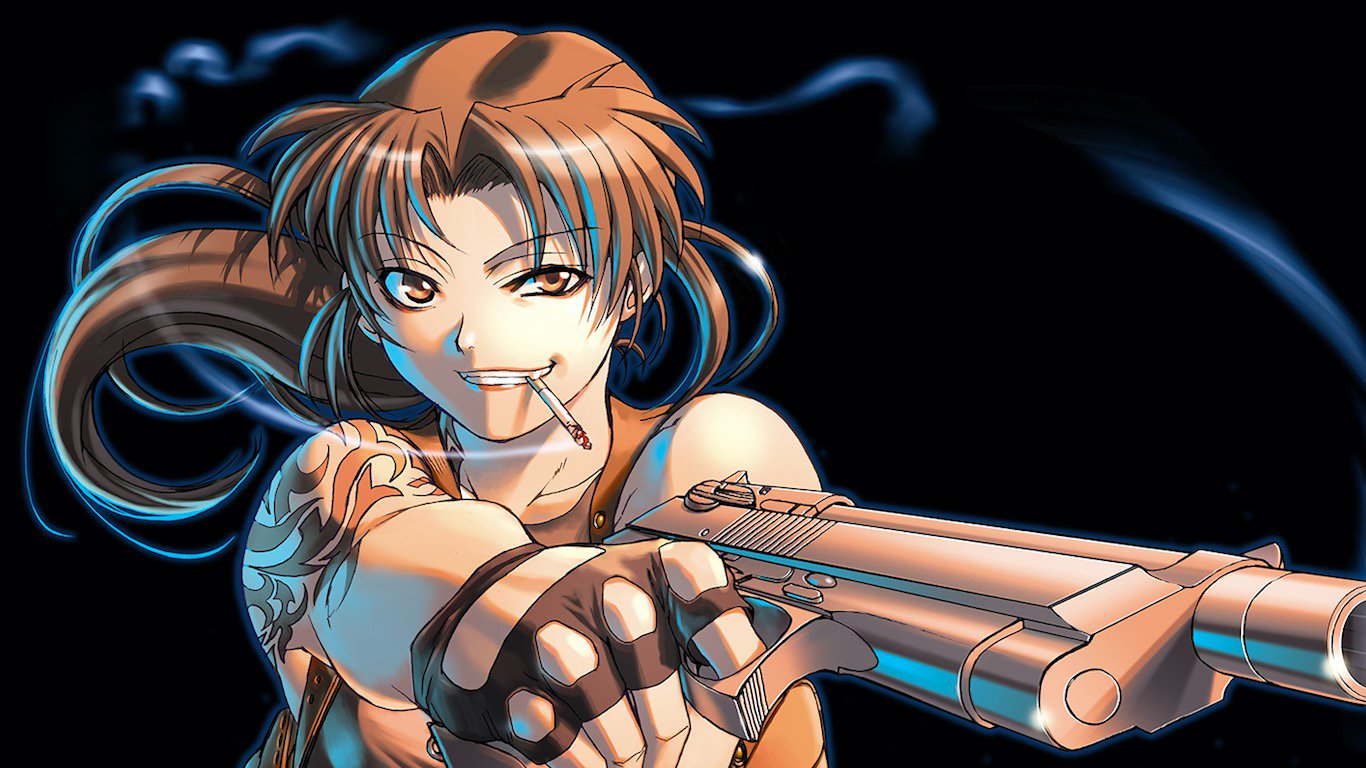★★★
“Jo…just Jo. Forget about the rest!”
 A couple of years ago when I wanted to rekindle my interest in anime, I stumbled over this series. Having been spoiled by the high quality of the GWG-anime Black Lagoon, I watched a couple of episodes of Burst Angel online, then left it and later couldn’t find it anymore. But also I didn’t bother, as the Youtube reviews I found painted a very dismal picture. According to one reviewer the series would later become stale, and always repeat the plot twist of the character of Meg being kidnapped and rescued by action girl Jo. Another – female – reviewer complained about the characters being sexually fetishized and getting bigger breasts in the inevitable “beach episode” (a standard in anime series which always gives a reason for some good-natured laughter).
A couple of years ago when I wanted to rekindle my interest in anime, I stumbled over this series. Having been spoiled by the high quality of the GWG-anime Black Lagoon, I watched a couple of episodes of Burst Angel online, then left it and later couldn’t find it anymore. But also I didn’t bother, as the Youtube reviews I found painted a very dismal picture. According to one reviewer the series would later become stale, and always repeat the plot twist of the character of Meg being kidnapped and rescued by action girl Jo. Another – female – reviewer complained about the characters being sexually fetishized and getting bigger breasts in the inevitable “beach episode” (a standard in anime series which always gives a reason for some good-natured laughter).
Flash forward to today when – after having consumed around 40-50 more anime shows – I rediscovered the show on the German amazon.prime. I have now seen the entire 24 episode run and can definitely revise my ill-informed opinion.
The story so far. Time: The future. Young student and upcoming cook Kyohei (Ueda) starts a new job, becoming cook to four girls of different ages. They all live in a very comfortable and large-sized mega-mobile home and also command a giant mecha. Financed by the mysterious organization “Bailan”, the four are always getting into action, after they get a (paid?) mission to fight monsters, giant robots or other strange creatures that suddenly appear.
Usually that means that tough grey-haired red-eyed Jo (Watanabe) gets into the mecha-armour and beats the opponent, until it stops moving. Who is behind these action usually stays unresolved. The other girls are Amy, a very young computer nerd; useless but obviously absolutely possessive Megan; and the older, leader of the team, Chinese girl Sei. Named after the characters in Little Woman (no, really!), they all assist and support Jo. And of course there’s Kyohei who is… just there. Which is strange, as it seemed in the beginning, he would be the main character – or that the story would at least be told from his perspective. But the series quickly all but forgets about him.
But to be honest, most of the characters don’t serve much purpose. The action usually centers almost all around Jo. Jo is a tough cooky from the street. As told in a short manga series, she and Megan originally formed a duo that would take on any job, before they formed a team with the other two girls. As a matter of fact, one episode even depicts how Jo meets Meg and her gang for the first time. Strangely, Meg appears in this episode much more grown-up and tougher than the rather infantile cry-baby she is depicted as, throughout most of the series.
The series is certainly not so uninspired or repetitive as one of the Youtube reviewers claimed it would be. It tells a range of stores stories, and also brings new elements into its narrative over its course. Every girl gets an episode where she can shine. So we see young Amy fight against robots in the Cyberworld, or Sei being confronted with a renegade faction within Bailan who wants to take over the organization by getting in possession of a powerful seal.
But the most interesting character is naturally the super-cool, calm Jo. Originally, my interest in the series grew because I thought she would be similar to Revy from “Black Lagoon”. Well, that might be a bit toi much of a compliment. While Revy is a three-dimensional character, Jo appears one-dimensional, almost a cliche, in comparison. The series gets its act together in the last few episodes when we discover Jo is one of two survivors from a biological weapon program run by an evil organization, who lost her memory. The show ends with her having to win her final fight, against the other, superior combatant spawned by the program.
This means lots of tears for Meg, as she clearly has to grow up now! ;-) In any way, while the series had a clear (and satisfying) ending, I amn’t so sure that things are quite as they seem, or that the dissolved team will never come together again. Though I hope the friendly Kyohei – whom I really wanted to see get a girl-friend – will find a better, or at least, more peaceful workplace in the future!
My personal judgement: Burst Angel is a good, solid and entertaining girls with guns show. There might be some improvements that could/should have been made but overall it’s good entertainment. Yes: stupid, sometimes downright silly Meg gets kidnapped more than once, though it didn’t bother me too much, and it’s not as apparent as you might think. I have much more an issue with the general uselessness of the character, though even she had an arc where she could do something, going undercover in a girl’s boarding school.
Concerning “sexually fetishization”… yeah, right. This is an anime show, what do you expect? But honestly, in comparison to other series – now I’ve got the experience to make a balanced judgement – the teasing is very limited. You want sexually fetishization? Watch “High School of the Dead” and then come back to the discussion. I’ve no problems with that, at least not in Burst Angel. You also don’t complain about Superman having a large chest or Batman wearing black latex and leather, do you?
Overall: A good show, though in the genre segment covering science fiction/fantasy action girls with guns, there are better shows with more developed characters. But as I said: I had a lot of mindless fun.
Dir: Koichi Ohata
Star: Akeno Watanabe, Megumi Toyoguchi, Rie Tanaka, Yūji Ueda





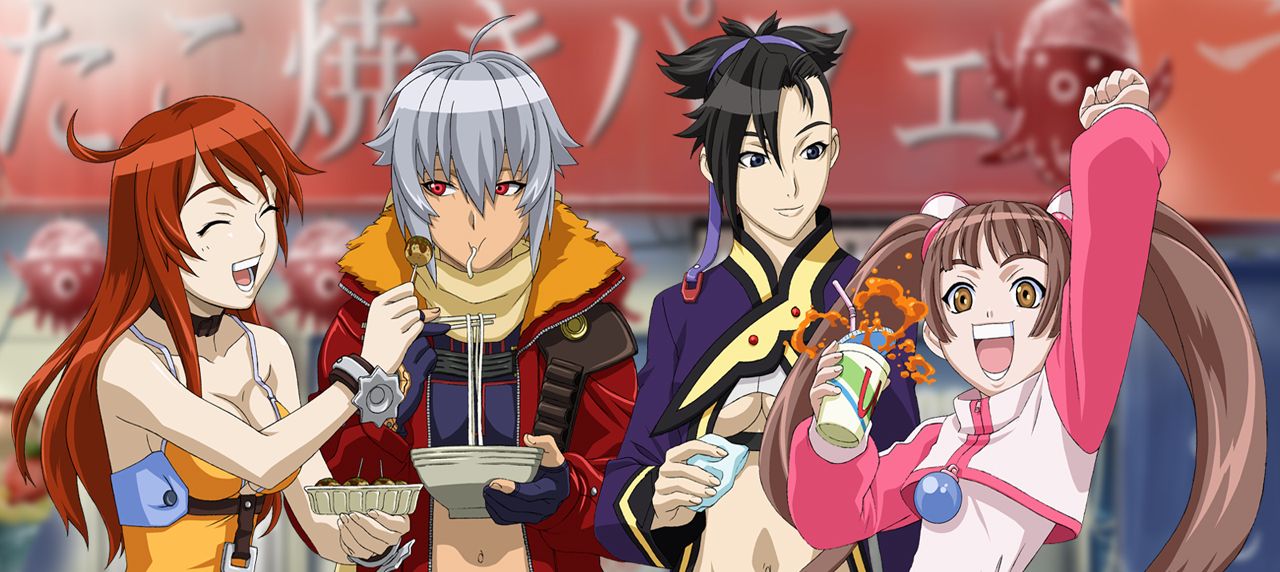
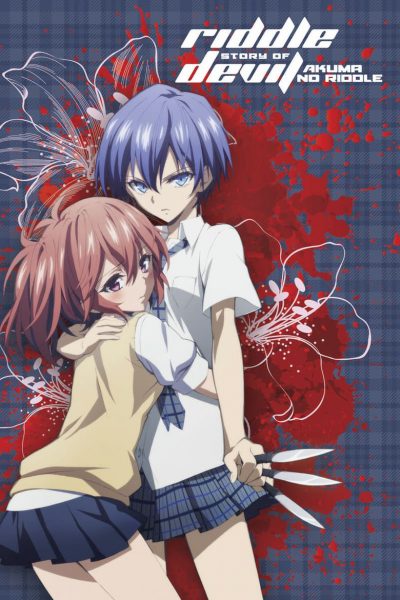 Another example which illustrates the difference between Western and Japanese approaches to education. For here we have “Class Black”, a group containing a baker’s dozen of female pupils, eleven of whom have been tasked by a mysterious group to assassinate the twelfth, with the person who does it being given absolutely anything they want by the organizers. Yeah, it’s not
Another example which illustrates the difference between Western and Japanese approaches to education. For here we have “Class Black”, a group containing a baker’s dozen of female pupils, eleven of whom have been tasked by a mysterious group to assassinate the twelfth, with the person who does it being given absolutely anything they want by the organizers. Yeah, it’s not 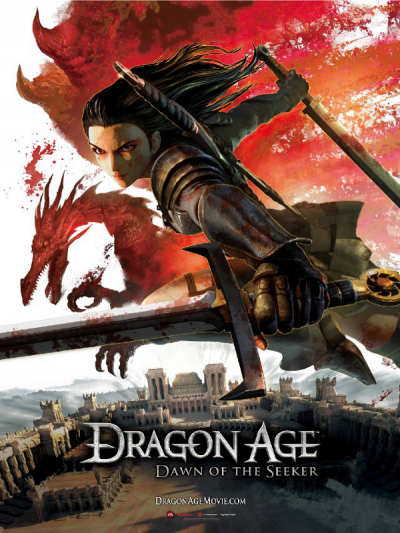 I have to start off with an important confession: I am not a gamer. I’ve never really been one. I might have played… two computer games in my entire life: “Tomb Raider 2” and “No-one Lives Forever 2”. That very special thing computer gamers experience when in front of the consoles? I’ve never felt it, it never got me. But then, I was born in the mid-70s, and this could be the territory of another generation. So maybe I’m not even qualified to evaluate a movie which was based on a computer game. On the other hand, I’m not reviewing a game here, but a film – and I think I know a fair bit about them! Hopefully, I get the details right.
I have to start off with an important confession: I am not a gamer. I’ve never really been one. I might have played… two computer games in my entire life: “Tomb Raider 2” and “No-one Lives Forever 2”. That very special thing computer gamers experience when in front of the consoles? I’ve never felt it, it never got me. But then, I was born in the mid-70s, and this could be the territory of another generation. So maybe I’m not even qualified to evaluate a movie which was based on a computer game. On the other hand, I’m not reviewing a game here, but a film – and I think I know a fair bit about them! Hopefully, I get the details right.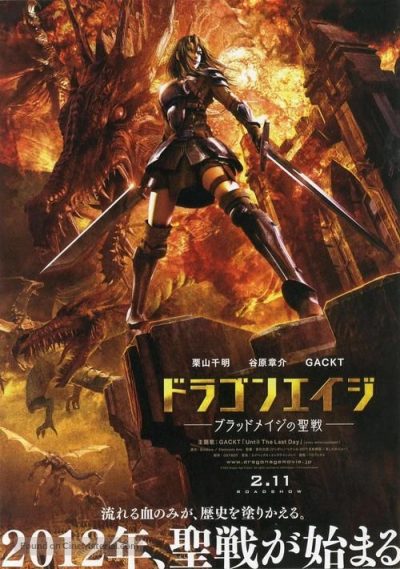 The story was smarter than I thought it would be, having ordered the used DVD to a low price, and knowing virtually nothing about the “Dragon Age” universe. To be honest, I
The story was smarter than I thought it would be, having ordered the used DVD to a low price, and knowing virtually nothing about the “Dragon Age” universe. To be honest, I  Almost four years after
Almost four years after 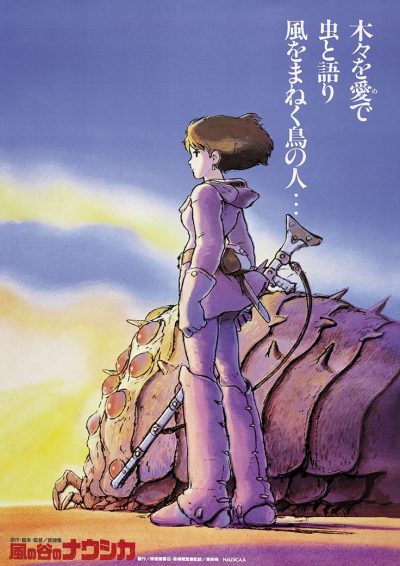
 After the enormous critical, if not commercial, success of Lupin III: Castle of Cagliostro, Miyazaki was commissioned to create a manga series for Animage magazine, with a potential film adaptation attached. Publication began in early 1982, but it would take a dozen years, albeit of intermittent publication, before that story was complete. When the series’s popularity among Animage readers was established, work began on the film adaptation, covering the early portion of the manga. Since this was before Miyazaki’s own Studio Ghibli was founded, an external company, Topcraft, were commissioned to create the animation. The budget was only $1 million, with a mere nine-month production schedule leading up to its release in March 1984.
After the enormous critical, if not commercial, success of Lupin III: Castle of Cagliostro, Miyazaki was commissioned to create a manga series for Animage magazine, with a potential film adaptation attached. Publication began in early 1982, but it would take a dozen years, albeit of intermittent publication, before that story was complete. When the series’s popularity among Animage readers was established, work began on the film adaptation, covering the early portion of the manga. Since this was before Miyazaki’s own Studio Ghibli was founded, an external company, Topcraft, were commissioned to create the animation. The budget was only $1 million, with a mere nine-month production schedule leading up to its release in March 1984.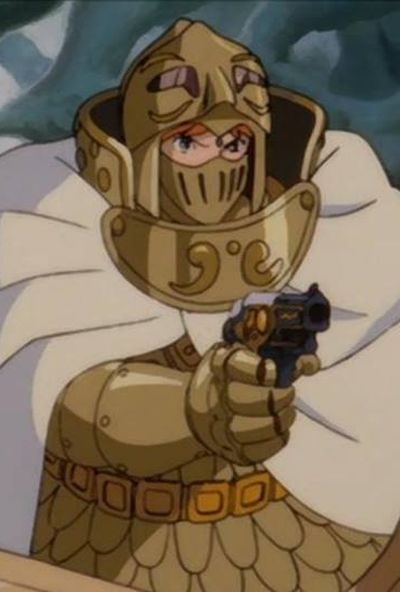 Miyazaki’s father ran an airplane parts company in World War II, and even his film company, Studio Ghibli, was named after an Italian plane. Almost every one of his movies
Miyazaki’s father ran an airplane parts company in World War II, and even his film company, Studio Ghibli, was named after an Italian plane. Almost every one of his movies 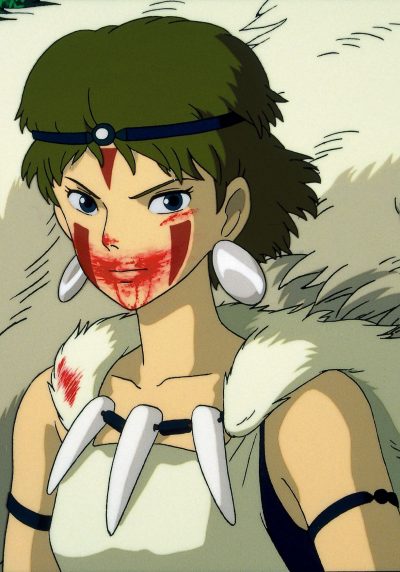 To some extent, this was the film which “broke” Miyazaki in the West, being his first feature to receive an unedited theatrical release in America. It wasn’t a huge commercial success, taking only about $2.4 million in North America. But it was very well-received, Roger Ebert listing it among his top ten films of 1999. It likely opened the door for the success of Spirited Away, which would win Miyazaki the Oscar for Best Animated Feature at the 75th Academy Awards. But if I’m being honest, I don’t like it as much as many of his movies. While there’s no denying the imagination and enormous technical skill here, it doesn’t resonate emotionally with me in the same way. I think it’s probably the central character, who is relatively bland and uninteresting, even compared to other characters in the movie.
To some extent, this was the film which “broke” Miyazaki in the West, being his first feature to receive an unedited theatrical release in America. It wasn’t a huge commercial success, taking only about $2.4 million in North America. But it was very well-received, Roger Ebert listing it among his top ten films of 1999. It likely opened the door for the success of Spirited Away, which would win Miyazaki the Oscar for Best Animated Feature at the 75th Academy Awards. But if I’m being honest, I don’t like it as much as many of his movies. While there’s no denying the imagination and enormous technical skill here, it doesn’t resonate emotionally with me in the same way. I think it’s probably the central character, who is relatively bland and uninteresting, even compared to other characters in the movie.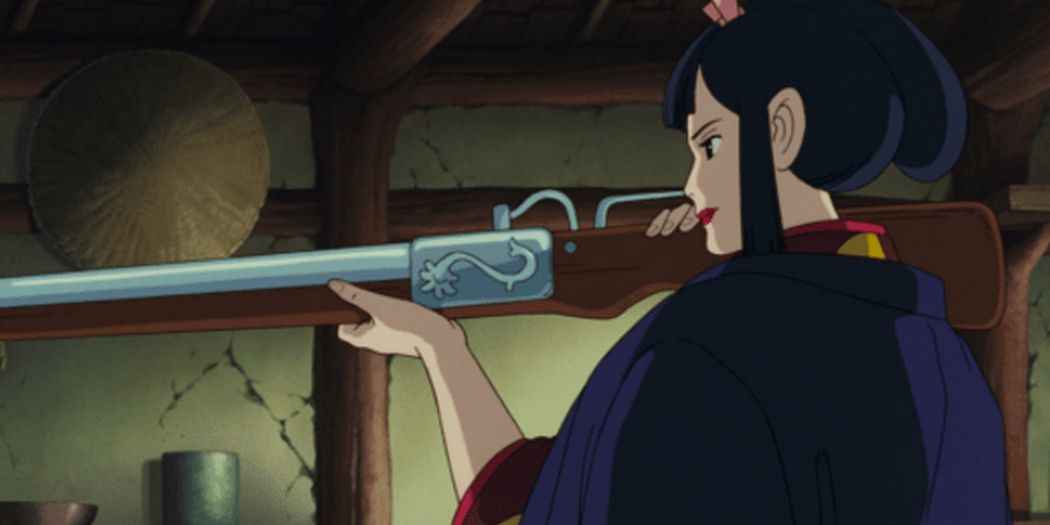
 There have been two (or perhaps three) subsequent comic-book incarnations. First was Battle Angel Alita: Last Order, originally published from 2001-14 in Japan. Then came Battle Angel Alita: Holy Night and Other Stories, though this was a collection of four side-stories – hence the “perhaps three”! Most recently, we had Battle Angel Alita: Mars Chronicle (2015-17). Two of the volumes from the first incarnation were adapted into a pair of 30-minute OVAs (Original Video Animation), released in June 1993. Rumblings of a live-action version have been around almost as long, with James Cameron securing the rights to the comic in 1999, having been introduced to the property by Guillermo Del Toro. By the mid-2000’s, a script had been created, but after developing the project in parallel with Avatar, Cameron decided to devote his efforts to that instead, and Alita went on the back-burner.
There have been two (or perhaps three) subsequent comic-book incarnations. First was Battle Angel Alita: Last Order, originally published from 2001-14 in Japan. Then came Battle Angel Alita: Holy Night and Other Stories, though this was a collection of four side-stories – hence the “perhaps three”! Most recently, we had Battle Angel Alita: Mars Chronicle (2015-17). Two of the volumes from the first incarnation were adapted into a pair of 30-minute OVAs (Original Video Animation), released in June 1993. Rumblings of a live-action version have been around almost as long, with James Cameron securing the rights to the comic in 1999, having been introduced to the property by Guillermo Del Toro. By the mid-2000’s, a script had been created, but after developing the project in parallel with Avatar, Cameron decided to devote his efforts to that instead, and Alita went on the back-burner.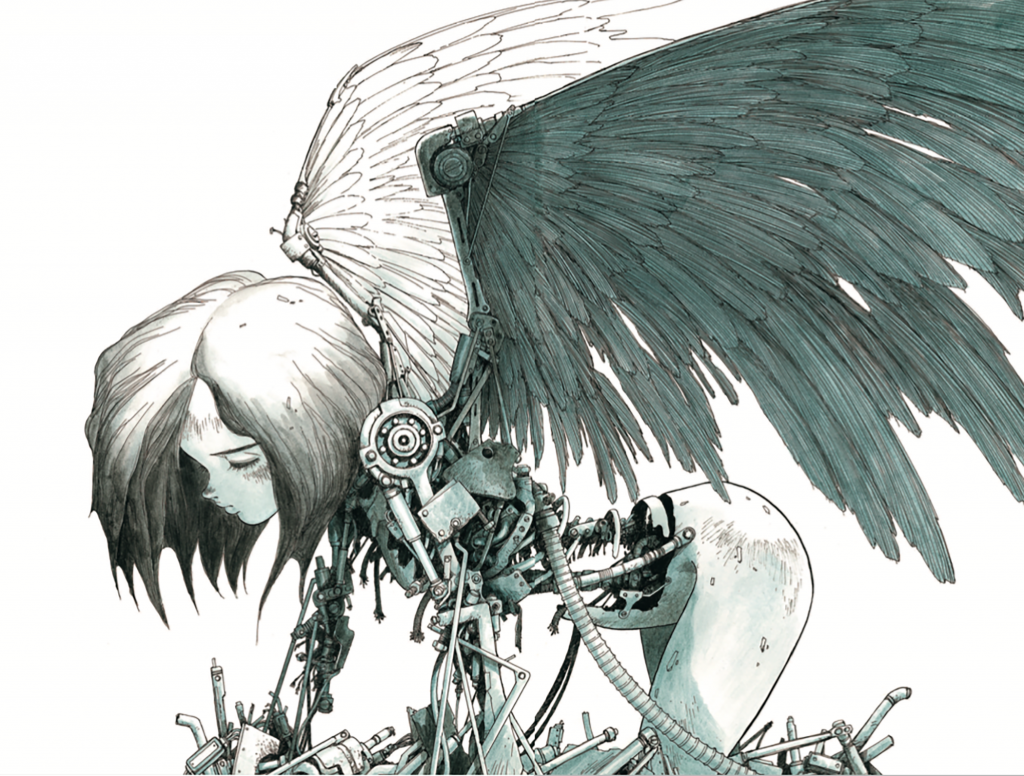
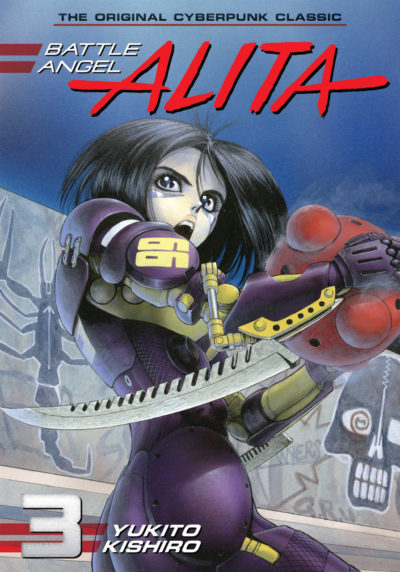 wever, there’s still an amazing amount going on in terms of story-line and universe-building. You can easily see how the feature film will only be able to cover perhaps one-quarter of the series. I presume it will begin with the origin story, in which Ido finds the head of Alita in the scrapyard beneath the floating city of Tiphares, and gives it a cybernetic body. He’s a part-time bounty hunter, only to find out quickly, the combat abilities of his new charge far surpass his own. Unfortunately, she has little or no memory of her prior life; where she got these skills and how she ended up in the scrapyard is only revealed well into the series.
wever, there’s still an amazing amount going on in terms of story-line and universe-building. You can easily see how the feature film will only be able to cover perhaps one-quarter of the series. I presume it will begin with the origin story, in which Ido finds the head of Alita in the scrapyard beneath the floating city of Tiphares, and gives it a cybernetic body. He’s a part-time bounty hunter, only to find out quickly, the combat abilities of his new charge far surpass his own. Unfortunately, she has little or no memory of her prior life; where she got these skills and how she ended up in the scrapyard is only revealed well into the series.








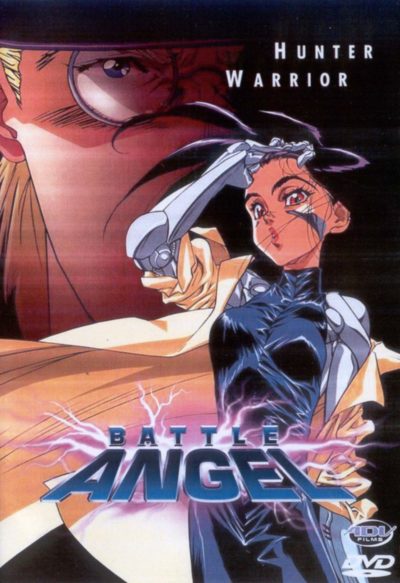 Watching this after having read the manga version, it feels like the anime version can do little more than scratch the surface of the world of Tiphares, in the barely fifty minutes it has to work with across its two OVA (Original Video Animation) volumes. The stories here, originally released in 1993, cover the first two section of the manga, and it looks like much of what we see here will also be included in the live-action film next February. Slightly confusing matters, is the way this uses the original Japanese names. So Tiphares becomes Zalem here, and Hugo is Yugo. Most oddly, the heroine is not called Alita – hence the absence of her name from the title – but Gally. To avoid further confusion, I’m going to be consistent with our other articles on the topic, and stick to the translated ones for what follows.
Watching this after having read the manga version, it feels like the anime version can do little more than scratch the surface of the world of Tiphares, in the barely fifty minutes it has to work with across its two OVA (Original Video Animation) volumes. The stories here, originally released in 1993, cover the first two section of the manga, and it looks like much of what we see here will also be included in the live-action film next February. Slightly confusing matters, is the way this uses the original Japanese names. So Tiphares becomes Zalem here, and Hugo is Yugo. Most oddly, the heroine is not called Alita – hence the absence of her name from the title – but Gally. To avoid further confusion, I’m going to be consistent with our other articles on the topic, and stick to the translated ones for what follows.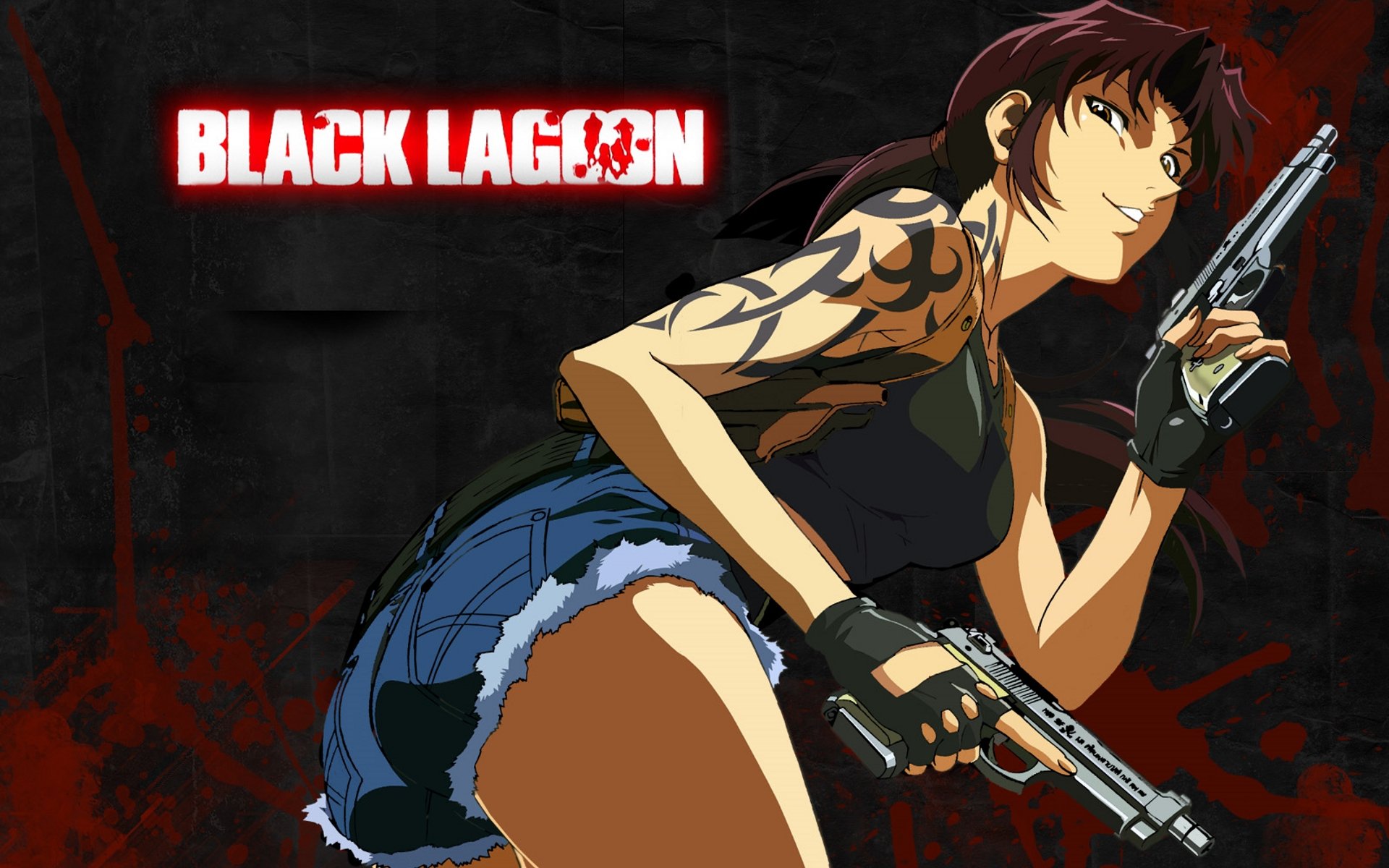 ★★★½
★★★½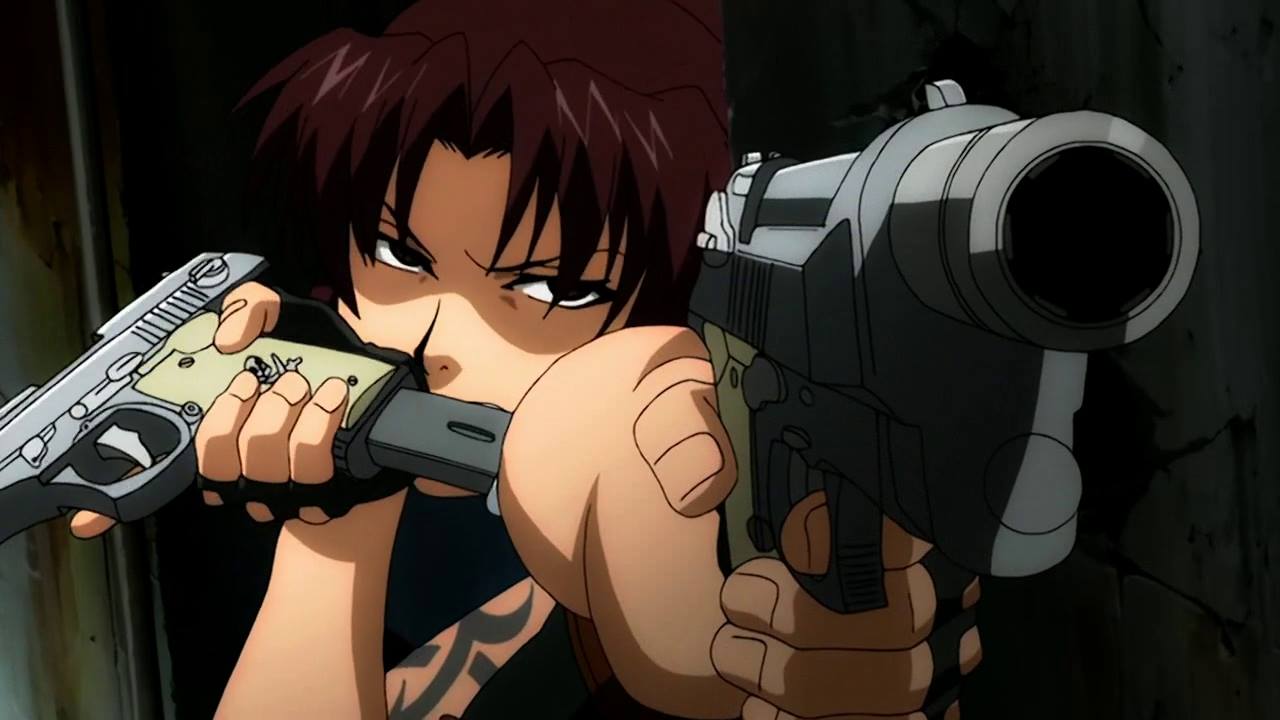 If she were the only candidate, this might end up being a bit of a borderline entry, but over the 24 episodes in the two series (there’s another five-episode arc I haven’t seen, Roberta’s Blood Trail, which came out in 2010), Revy is joined by a number of other, morally ambiguous women, all of whom are more than comfortable with firearms:
If she were the only candidate, this might end up being a bit of a borderline entry, but over the 24 episodes in the two series (there’s another five-episode arc I haven’t seen, Roberta’s Blood Trail, which came out in 2010), Revy is joined by a number of other, morally ambiguous women, all of whom are more than comfortable with firearms: